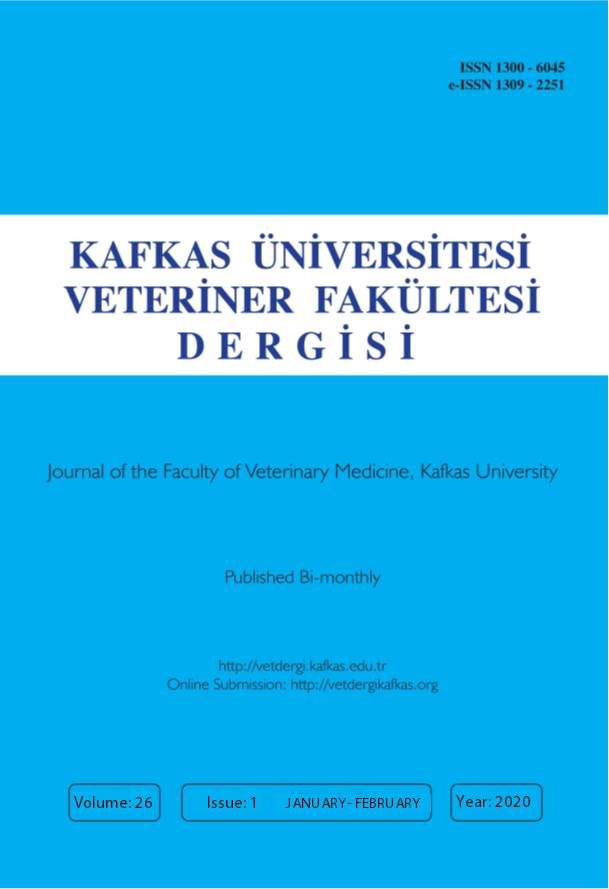
This journal is licensed under a Creative Commons Attribution-NonCommercial 4.0 International License
Kafkas Üniversitesi Veteriner Fakültesi Dergisi
2020 , Vol 26 , Issue 1
Expression Profile of Sox5 and Sox6 in Sertoli and Spermatogonial Cells in Growing Mice Testis
1Key Laboratory of Agricultural Animal Genetics, Breeding and Reproduction, Education Ministry of China, College of Animal Science and Technology, Huazhong Agricultural University, Wuhan 430070, PR CHINA2Faculty of Animal Husbandry and Veterinary Science, Sindh Agriculture University, Tandojam, 70060, PAKISTAN
3Department of Animal Health, Faculty of Animal Husbandry and Veterinary Science, The University of Agriculture, Peshawar, 2500, PAKISTAN
4Faculty of Animal Husbandry and Veterinary Science, Lasbela University of Agriculture, Water and Marine Sciences (LUAWMS), 90150, PAKISTAN DOI : 10.9775/kvfd.2019.22413 SRY box genes are peculiar to animal kingdom. They are involved in many processes particularly sex determination and testes development in male embryo. Although Sox family genes have been identified in various cells, their expression pattern and role is not entirely recognized in Sertoli cells. In this research, we focused on the expression of SoxD group Sox5 and Sox6 genes in Sertoli cells of mice during pre- and postpubertal testicular development ranging from one-week-old to eight-week-old mice. The expression was studied by immunohistochemistry on whole testes, and qPCR to determine the mRNA level of all age groups, while immunocyto-chemistry was performed for localization in specific age groups. qPCR results of Sertoli cells from first week to eight week showed different levels of expression. The mRNA level of Sox 5, during prepubertal age, was significantly high (P<0.001), but as the age progressed, the expression became low. Conversely, Sox6 was initially expressed faintly, but at the pubertal age, the expression rose significantly (P<0.001). Furthermore, the expression signals of both genes on spermatogonial cells were also found strong. The study shows that Sox5 and Sox6 are expressed during postnatal and pubertal periods and may play a vital role in the maturation of spermatozoa. In addition, they overlap to regulate multiple functions like spermatogenesis and steroidogenesis in testes. Keywords : Sertoli cells, Spermatogenesis, Sox5, Sox6, Testis










